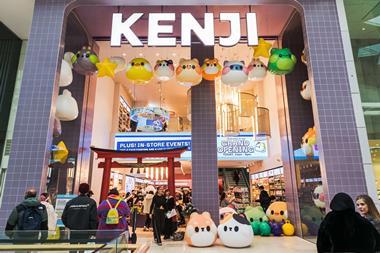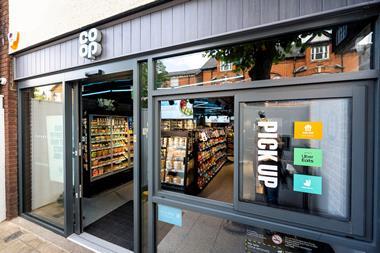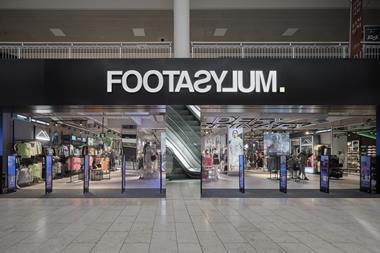Carbon disclosure, Carbon Trust, carbon emissions, carbon footprint. In these parlous times, when the word environment is uttered, the c-word seems to follow as inevitably as night follows day.
And retailers have been fairly quick to realise that unless they are at least seen to be doing something about the way in which they consume resources, opinion will harden against them. Doing nothing and hoping for the best is no longer an option.
Which perhaps goes some way towards explaining why media accusations of greenwashing abound when retail is mentioned. Talk to any retailer about environmental matters and there is a fair chance that you will be told that an awful lot is going on. This may be the case, but cynics will always question how much is PR and how much is making any kind of a difference. Separating spin from reality is a tall order.
There are, of course, high-profile initiatives that have garnered column inches, with Marks & Spencer’s Plan A and Tesco’s wooden eco store in Scotland among the most prominent examples. In fairness, both retailers fall into the doing, rather than being seen to be doing, camp and continue to set the agenda for others. And much of what is happening is concentrated on in-store environments and the buildings that contain them.
Leonie Smith, a director at communications and design consultancy Wanda, says: “Everyone else is playing catch-up with M&S on the eco front. Whenever someone leads, those who follow won’t get the credit for their actions.” This is a prescient comment, because much of what is done on this front is about getting plaudits and adding shoppers. From this perspective, going green in stores has two strands. There is still the halo effect to be gained from acting “responsibly”, which also accounts, in some measure, for the proliferation of corporate social responsibility departments in retailers, but there is also the matter of profit. Smith puts the case succinctly: “Corporate reputations aside, green really does impact on the bottom line. But, for retailers, it is a lose-lose situation, because people think that big corporates are bad.”
For many retailers, there’s the rub. Richard Gillies, director of store design, development and procurement at Marks & Spencer and close to the heart of much of M&S’s Plan A, says: “The customer research that we’ve done suggests there is a lot more to be done in terms of communicating the [green] message.” He says that quality, value, service, innovation and trust are the pillars on which the M&S offer rests and, within this, topics such as a retailer’s carbon footprint have come to the fore. “10 years ago, this just wouldn’t have been on the agenda,” he says.
The problem for Gillies and many retailers that might wish to emulate the example set by M&S is that much of what is being done that has any measurable effect isn’t seen by customers. Almost every retailer seems to have woken up to the fact that there is more to being green than putting a windmill on the roof or adding a few solar panels.
Visit the M&S eco store in Bournemouth, which opened last autumn and you might be hard pressed to see what the difference is between a conventional branch and this one. Once through the front door, you might note that the store entrance has a kind of air lock-cum-decompression zone that helps to keep the cool or hot air in the stores, depending on the weather. It is equally possible that you might miss this entirely and, once inside, details such as low-energy LED lighting set within the door frames of upright freezers or recycled plastic panels will pass unremarked.
As Gillies points out, the real energy savings are affected by what happens on the roof, where air-conditioning units and other pieces of plant are located. M&S customers will be blissfully unaware of the background technology that has been deployed to make the store a more ecologically friendly version of its sister branches. “A fair chunk of what we are doing would be of little interest to the consumer,” says Gillies.
But that is not the point. M&S – in common with a number of other retailers – is moving beyond the point where it wants to wear its green credentials on its sleeve. It is now heading towards making green an inherent part of its store design proposition.
FINAL PUSH
Boots corporate social responsibility manager Ian Blyth says: “Embedding sustainability into our stores is something we have been doing for years. Recycling was something that we were doing in the 1930s, because it made business sense. The 80 per cent that takes 20 per cent of the effort is done. Now we have to look at what we can do differently.” He explains that the switch to greener stores is something that cannot take place overnight, citing the fact that Boots’ edge-of-town stores are “10 to 15 per cent more energy efficient” than they were five years ago.
This also highlights another problem confronting most retailers. It’s relatively easy to build new, more energy-efficient stores that have a smaller carbon footprint. The difficult bit is achieving the same results within an existing store portfolio. The cost of creating a new green store is higher than a conventional shop at present, mainly because the materials involved have yet to be subject to economies of scale in the open market. But, pro rata, this capital expenditure is likely to be higher still if you need to strip out and convert an existing store to make it more sustainable. This is compounded when it is considered that many retailers lease space within shopping schemes. “One of the difficult things for commercial tenants is that you’re stuck with what the landlord gives you,” says Smith.
All of which does little to answer the question of whether greener stores are merely an efficient marketing tool, something of a fad, or whether they are here to stay. Certainly, things are changing in terms of the way a sustainable store functions and how it appears. Jason Allcorn, creative director at Redesign, a consultancy that takes recycling as its raison d’etre, says: “Using wood, stone and natural-looking materials was almost the first way of showing the greening of a store and it’s become a cliche. A lot of people still think along these lines, but we have a sort of mantra that says it’s got to be good and gorgeous.” Practically, this means that green-looking stores may not be particularly green. Recycled plastics, new materials, or hi-tech solar panels that work at a structural level as part of a store’s fabric are all alternatives. They will have a considerably longer life, thereby diminishing the impact on the environment through over-frequent disposal of building waste.
Simon Threadkell, creative director at the UK arm of retail design consultancy Fitch, pursues the same line of thinking. “We have invested a lot of time in the past eight months in building a library of sustainable materials that can be used. The difficulty is that it does cost,” he explains.
Threadkell recognises the tension between retailers wanting to do the right thing and the need to bring a project in on time and on budget. He adds that the interior layout and eco-credentials of even the most sustainable stores are probably about four years behind the shells that contains them, in terms of green development. “Hard architecture is ahead of us in the drive to be green,” he says.
It is perhaps also worth noting that, in addition to the layout and fabric of a green store, a number of retailers are looking at the operational side of being more environmentally friendly. BT Expedite, for example, has worked with Halfords and Jane Norman to reduce the number of till points in a store and eliminate the need for a back office. Information from the tills is now relayed to a central network, instead of being filtered though a back-office system, saving energy across the retailers’ stores. The company has also provided WHSmith and Mothercare with e-learning; online tutorials delivered via till points that eliminate the need for in-store operational manuals. BT Expedite claims this has resulted in a paper saving of 46 per cent at branch level.
It seems, therefore, that wherever you look there is a real desire to do more to be green in most retail organisations. But, equally, there will continue to be suspicions about the motives that underpin retailers heading in this direction. The point is probably rapidly approaching where sustainability will become an inherent part of every company’s corporate DNA, rather than a bolt-on, emanating from a corporate social responsibility department. At which point, the PR green war will be over.
And, as retailers become greener, it is likely the cost of entry to the green club will come down and sustainable store design will become accessible to all-comers. Even in these challenging times, there appears to be little let-up in the pace of eco-change.


























No comments yet